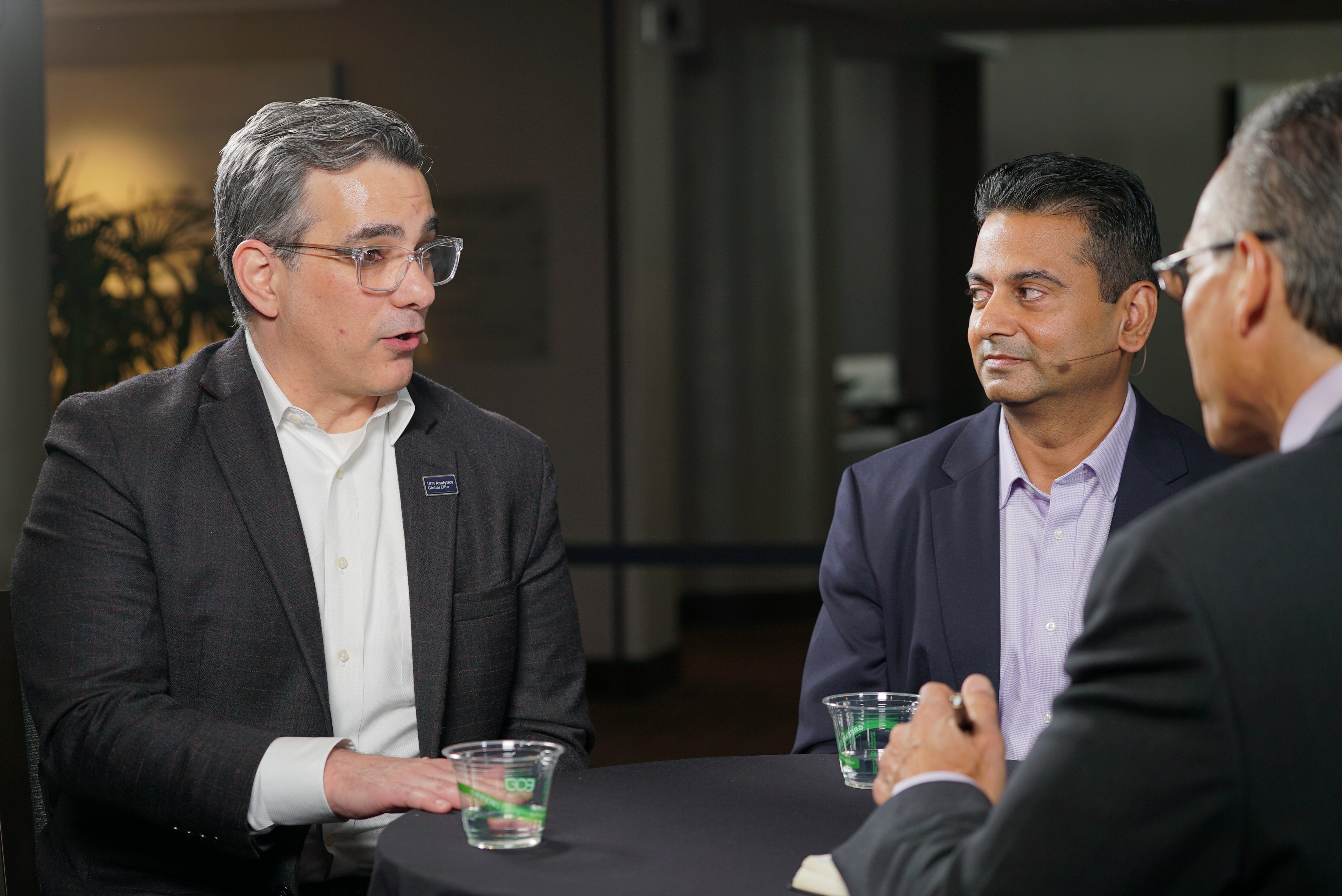 BIG DATA
BIG DATA
 BIG DATA
BIG DATA
 BIG DATA
BIG DATA
As more and more enterprises turn to big data for business insights, the challenge is to garner enough support and collaboration to make information effective across a variety of departments and people — creating a cultural change. Verizon Communications Inc. and IBM Corp. are just two of the large enterprises that have successfully implemented the usage of big data across their companies, and two of these companies’ leaders shared some of their insight into the process.
“Honestly, the technology part, the bringing it together is the easy part,” said Seth Dobrin (pictured, left), vice president and chief data officer of analytics at IBM. “It’s the cultural change that goes along with it that’s really, really hard.”
Asim Tewary (pictured, right), head of data science and advanced analytics at Verizon, agreed. “Data only creates value when you’re able to get it from all the difference sources … to have a common platform, common data science team to drive revenue across the businesses.”
Dobrin and Tewary spoke with Dave Vellante (@dvellante), host of theCUBE, SiliconANGLE Media’s mobile livestreaming studio, at the IBM Chief Data Officer Strategy Summit in San Francisco. They discussed the challenges and successes of creating a cultural embrace of big data within big enterprises. (* Disclosure below.)
One of the most important ways to bring about the cultural change needed for successful big data implementation is a helping departments and teams within the enterprise realize that shared data is a good thing.
“It is not your data or my data; it is the firm’s data, and the value you create for the business is from that data,” Tewary explained. “It is a transformation. It’s changing the people culture aspect, so there’s a lot of education. You know, you have to be an evangelist. You wear multiple hats to show people the value.”
For Tewary at Verizon, finding advocates within the company for sharing big data was crucial. “We found champions,” he said. “For example, finance … was a good champion for us, where we used the data and analytics to really actually launch some very critical initiatives for the firm — asset-backed securities. … That created the momentum.”
Dobrin agreed with this strategy of using champions within an enterprise to help lead the way for the entire company. “It’s not just a jump to the top of the ladder, because there’s just a lot of work that’s required to do it. You can do that within a business unit.”
While the whole enterprise doesn’t need to get there all at the same time, as other areas of the enterprise begin to see the use of big data and how it can change the game, they will be open to the idea, Dobrin explained.
“You find a partner that’s going to be a champion for you. You make them immensely successful, and everyone else will follow because of shame, because they don’t want to be out-competed by their peers,” he said.
Watch the complete video interview below, and be sure to check out more of SiliconANGLE’s and theCUBE’s coverage of the IBM Chief Data Officer Strategy Summit. (* Disclosure: TheCUBE is a paid media partner for the IBM Chief Data Officer Strategy Summit. Neither IBM, the event sponsor, nor other sponsors have editorial control over content on theCUBE or SiliconANGLE.)
Support our mission to keep content open and free by engaging with theCUBE community. Join theCUBE’s Alumni Trust Network, where technology leaders connect, share intelligence and create opportunities.
Founded by tech visionaries John Furrier and Dave Vellante, SiliconANGLE Media has built a dynamic ecosystem of industry-leading digital media brands that reach 15+ million elite tech professionals. Our new proprietary theCUBE AI Video Cloud is breaking ground in audience interaction, leveraging theCUBEai.com neural network to help technology companies make data-driven decisions and stay at the forefront of industry conversations.